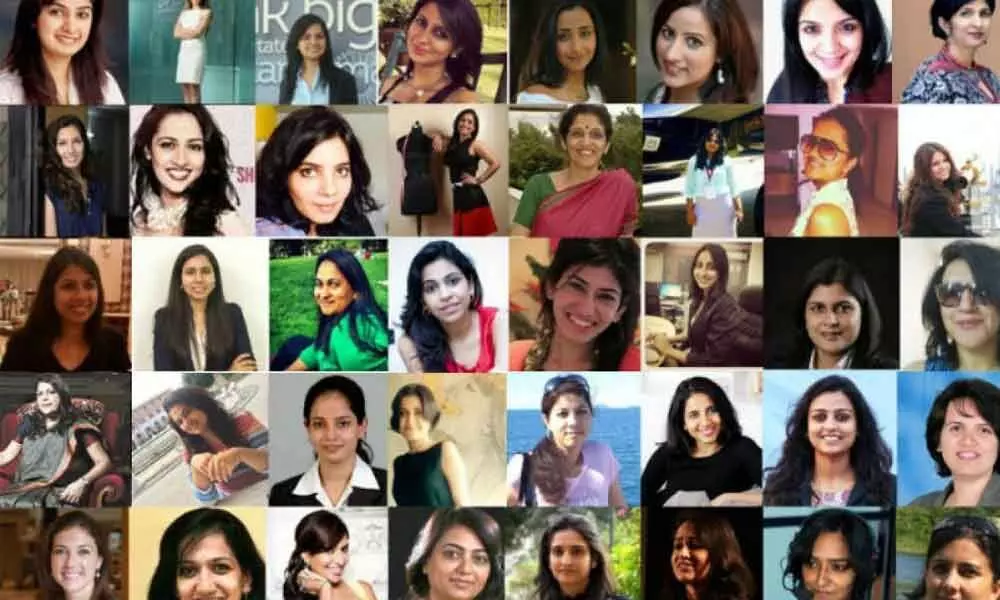Challenges for female entrepreneurs in India

Globally, men are more likely to start new ventures than women.
Globally, men are more likely to start new ventures than women. Empirical evidence suggests that women have lower hubris and a higher level of humility, which negatively affects their risk-taking behaviour and limits their engagement in entrepreneurship. If only women were as immodest and over-confident as men!
In fact, our very own Indian icon, Kiran Mazumdar-Shaw, remarks on her journey as an entrepreneur, "You have to keep challenging the status quo. I was doing something on my own, I was doing something quite pathbreaking, I couldn't look or turn to anybody at that stage.
I realised I was doing it alone, I realised I was doing something very different and I just managed to do things with a lot of common sense, with a lot of determination and a lot of foolish courage, I might add."
Unfortunately, it is not just lower hubris that is preventing women in India from being successful entrepreneurs. India has between 13.5 and 15.7 million enterprises owned by women.
Government intervention, improved financial access and access to education led to an increase in women-owned enterprises from 14% to 20% in the last decade. However, there are several challenges that women entrepreneurs face that are not common for their male counterparts.
According to a report by MasterCard, India's business environment is not favorable for female entrepreneurs. There are several social, technical and financial barriers that hinder the growth of women-owned businesses.
To begin with, some firms are registered as women-owned due to financial and administrative reasons but are actually managed and operated by men. Moreover, a larger share of women-owned firms is a single-person enterprise, generates lower revenues and is smaller in size than those owned by men.
Most women are still pursuing business activities on the side as they continue to do majority of the household chores. They are also often the primary caregivers taking care of the children and elderly. The nature of businesses that women are involved in are also different from those of men, so their need for credit and the corresponding credit cycles are different.
Women in rural areas also often need permission from a male member in their family before stepping out of the house and are often accompanied by a male relative for a trip to the neighbouring bank due to safety concerns or social norms.
Women's access to financial resources is also limited because of several reasons. More women save than borrow to start, operate or expand a farm or business in India and globally.
The informal, social network as a source of funding is often less available to women and often limited to women from high-income families. Borrowing from family members or friends to start a business is not an option for many in the agriculture sector or subsistence entrepreneurs in India.
Moreover, women have lower bargaining power on use of household income and savings. This makes their access to independent, formal financial sources very important.
NITI Aayog's digital platform, Women Entrepreneurship Platform (WEP), is an initiative that strives to bridge the information asymmetry for female entrepreneurs. Users can register at the portal and get information about various government schemes and connect with service providers such as accountants for their business needs.
They have around 13,000 registered entrepreneurs. They launched the Women Transforming India (WTI) Awards in 2016 to recognise the entrepreneurial endeavors of women in India and applaud their perseverance, tenacity and hard work.
The winners of the Fourth Edition of these awards will be announced on March 8, 2020, from a pool of Top 30 candidates. Data from approximately 2,300 entrepreneurs, who registered this year, echoes the challenges mentioned above.
64% of these women-owned firms were privately owned or were sole-proprietorship; most of them started with less than INR 30 lakhs; and 84% had a turnover of less than INR 1 crore. 80% operated in the education and social innovation and impact sectors.
Entrepreneurs from Tier 2 and 3 cities mostly operated in education, manufacturing, handicrafts and healthcare sectors and agro-entrepreneurs were mostly from Tier 3 cities. All these entrepreneurs identified lack of capital, lack of awareness and access to market as the top 3 challenges to their business.
Socio-cultural challenges and gender bias were listed as the most prominent social challenges. They also emphasized on the lack of investors willing to fund smaller size loans for their business needs.
Digital financial tools are likely to help women overcome challenges associated with access to financial institutions and information asymmetry.
Women can use mobile or internet to access their bank accounts or transfer and receive money directly into their accounts. They can save on time spent on travelling to a bank branch for financial transactions and reduce the cost of the travel.
This increases their time for productive activities and reduces the cost of financial transactions. These savings account for significant gains as women-run businesses often have lower sales and profitability because of the sector of operation and the smaller size.
Digital tools also address safety concerns of family members that do not like their wives or daughters to travel alone for business or to access banks. Moreover, digital records can also help improve inventory management and help make procurement decisions more efficient.
Digital financial products tailored to capture business activities like regular payments of a client's utility bills and inventory management could be used to build credit history for new entrepreneurs who do not have sufficient collaterals, guarantees or a credit history.
Waiver of minimum balance requirements on deposit accounts, provision of small to mid-ticket loans and micro-savings options are some other financial products that can be provided through digital applications.
Direct transfers to women's accounts can also increase the financial autonomy of women and improve their ability to save or invest in their business.
Digital platforms like the NITI Aayog's WEP can be used to improve skills like bookkeeping; connect with accountants for tax incentives and compliance; learn more about government schemes; and engage in efficient investment management.
While technology has the potential to improve the efficiency of operations of a woman's business, their access to technology itself is limited. Restricted access to electricity and absence of a robust, ubiquitous digital network are common stymies to the digital financial revolution in India.
Moreover, fewer Indian women have access to a mobile handset or internet than men. Women are also less likely to use smart phones or experiment with new financial products and a new technology.
It has also been observed that while women are aware of social media applications, they are not as informed about financial tools and applications that can help them expand their business.
Gender-gap in education outcomes has reduced significantly in the country, but a gender-gap in financial literacy can negatively affect business efficiency. These challenges limit women from using financial tools digitally and their productivity as entrepreneurs.
Improving access to financial tools using digital technology is effective for increasing female participation in entrepreneurship. However, this is only part of the solution. There are several other social and economic challenges that need reforms.
The government, private sector and non-profit organisations have launched several schemes and initiatives to help women-owned businesses. Mandatory procurement from 3% women-owned MSME firms or skill-training and certification programmes catering women entrepreneurs are some examples.
A reliable care-economy with safe, affordable and accessible daycares for children and elderly; social protection schemes like health and business insurance plans; and equal participation of men and women in household chores are some social reforms that can help women entrepreneurs become a part of India's growth story in the coming decade.
(Dr Rajiv Kumar is Vice Chairman, NITI Aayog, and Pankhuri Dutt, Public Policy Consultant (Economic and Finance), NITI Aayog. Views expressed are personal)














